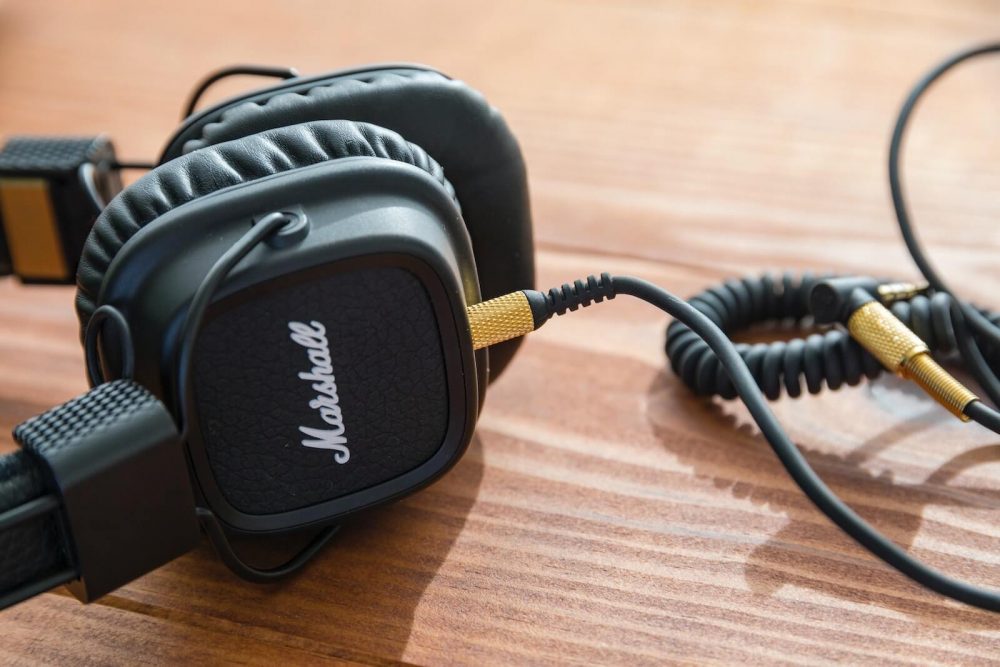Wired Vs Wireless Headphones Radiation - Navigating The Facts And Myths
If you are new to the realm of personal audio, you might compare the wired vs wireless headphones radiation. After all, some of the greatest headphones use Bluetooth to transmit wirelessly, and there has already been debate over potential health risks. So, compared to Bluetooth headphones, do wired headphones pose a lower radiation risk? Find out by reading on.
Author:James DavisOct 04, 202321.4K Shares301.5K Views

If you are new to the realm of personal audio, you might compare the wired vs wireless headphones radiation. After all, some of the greatest headphones use Bluetooth to transmit wirelessly, and there has already been debate over potential health risks. So, compared to Bluetooth headphones, do wired headphones pose a lower radiation risk? Find out by reading on.
We can logically assess the risks even when we are aware that headphones do create some radiation. Let this essay lead you through the facts and fallacies regarding the wired vs wireless headphones radiation.
Understanding Electromagnetic Radiation
At the heart of the wired vs. wireless headphones radiation debate lies the concept of electromagnetic radiation. This intricate phenomenon encompasses a vast spectrum of energy, ranging from low-frequency radio waves to high-energy gamma rays. To comprehend the implications of wireless headphones and potential radiation exposure, it's essential to explore the basics of electromagnetic radiation.
Electromagnetic radiation, often referred to as EM radiation or EMF, is a form of energy that manifests as waves, each characterized by its unique frequency and wavelength.
This spectrum spans a diverse range of phenomena that shape our world, including visible light, radio waves, microwaves, infrared radiation, ultraviolet radiation, X-rays, and gamma rays. While these waves differ in their energy levels and applications, they all share the fundamental property of oscillating electric and magnetic fields.
The two primary categories of electromagnetic radiation are ionizing and non-ionizing radiation. Ionizing radiation, such as X-rays and gamma rays, carries sufficient energy to ionize atoms and molecules, potentially causing cellular damage and health risks. Non-ionizing radiation, on the other hand, has lower energy levels and is generally considered less harmful. Wireless headphones fall within the realm of non-ionizing radiation.
Wireless Headphones And Radiofrequency (RF) Radiation
Wireless headphones, particularly those employing Bluetooth technology, operate by emitting radiofrequency (RF) radiation to establish communication with the source device. RF radiation is a type of non-ionizing radiation that falls within the microwave portion of the electromagnetic spectrum. It is the same type of radiation used by cell phones, Wi-Fi routers, and other wireless communication devices.
The process by which wireless headphones transmit audio involves the generation and modulation of RF radiation. The headphones convert the audio signal into electromagnetic waves, which are then transmitted as RF radiation. When these waves reach the receiving device, they are demodulated back into an audio signal that the user perceives as sound.
Bluetooth headsets (or earbuds) release far more EMF radiation than corded headsets when compared to them. They are therefore considerably more harmful. In essence, these are little cell phone towers that you insert into your ears.
The concern regarding wireless headphones and RF radiation stems from the proximity of these devices to the head during use. Some studies have explored potential health risks associated with prolonged exposure to RF radiation emitted by wireless communication devices, including headphones.
These concerns revolve around the possibility of increased heat generation in tissues, potential effects on brain tissue, and the long-term implications of continuous exposure.
To address these concerns, regulatory bodies like the Federal Communications Commission (FCC) have established safety standards that dictate the allowable levels of RF radiation emitted by wireless devices. These standards aim to ensure that devices like wireless headphones do not pose a significant health risk to users. Manufacturers typically test their devices to ensure compliance with these standards before bringing them to the market.
As technology evolves, so does our understanding of its potential impact on our health. The debate around wired vs. wireless headphones radiation highlights the importance of informed decision-making.
While current research suggests that wireless headphones fall within regulatory safety limits, users can take measures to mitigate potential risks. Balancing the benefits of wireless convenience with awareness of potential radiation exposure allows individuals to make choices that align with their preferences and well-being.
Wired Headphones And Radiation
In the wired vs. wireless headphones radiation debate, wired headphones emerge as the safer option in terms of potential radiation exposure. The mechanism behind this distinction lies in the fundamental difference in how wired headphones operate compared to their wireless counterparts.
Wired headphones, also known as corded or cabled headphones, rely on physical cables to transmit audio signals. Unlike wireless headphones, which emit radiofrequency (RF) radiation to establish connections, wired headphones do not emit significant levels of RF radiation. However, it's important to note that all electronic devices, including wired headphones, generate low levels of electromagnetic fields (EMFs) due to the flow of electrical currents.
The EMFs generated by wired headphones are relatively low and localized to the cable itself. These EMFs are not associated with the same concerns as the RF radiation emitted by wireless devices, as they have different energy levels and biological interactions. The cable's length, type, and the amount of current flowing through it contribute to the strength of the EMFs generated.
Radiation Levels And Safety
Regulatory bodies around the world, such as the Federal Communications Commission (FCC) in the United States, establish safety standards for allowable levels of radiation emitted by electronic devices. These standards are in place to ensure that devices, including both wireless and wired headphones, do not pose significant health risks to users.
It's important to differentiate between the radiation emitted by wireless and wired headphones. Wireless headphones emit RF radiation, and their safety is regulated based on established RF safety limits. Wired headphones, on the other hand, emit lower levels of EMFs, and their safety is regulated based on guidelines that focus on avoiding direct contact with electrical currents.
Wired headphones offer a level of comfort for those concerned about potential radiation exposure. The minimal EMFs generated by these headphones, coupled with their absence of RF radiation emission, contribute to their safety profile. For individuals who prioritize minimizing radiation exposure while enjoying their audio experiences, wired headphones provide a reassuring option.
As users navigate the landscape of headphone choices, it's crucial to consider individual preferences, priorities, and comfort levels. While wired headphones emit low levels of EMFs, wireless headphones adhere to safety standards for RF radiation. Staying informed about the types of radiation emitted by each type of headphone empowers users to make choices that align with their understanding of potential risks and benefits.
Research And Knowledge Gaps
In the ongoing discourse surrounding the radiation emitted by wired and wireless headphones, the role of research and the existing knowledge gaps play a crucial role in shaping our understanding of potential health impacts. As technology advances and our reliance on headphones grows, delving into research and acknowledging areas of uncertainty becomes pivotal for informed decision-making.
The field of research investigating the effects of headphone radiation is characterized by a mix of findings, discussions, and ongoing studies. While some research suggests potential concerns related to wireless headphone radiation, other studies yield inconclusive results or find no significant health risks. The complex interplay between factors such as radiation intensity, exposure duration, and individual sensitivities contributes to the variability in research outcomes.
Several knowledge gaps persist within the realm of headphone radiation research:
- Long-Term Effects -The long-term consequences of prolonged headphone use, especially wireless headphones, remain a subject of ongoing investigation. Research tracking users over extended periods is essential for establishing any potential cumulative health risks.
- Specific Health Impacts - The potential effects of headphone radiation on specific health aspects, such as cognitive function, hearing health, and the risk of chronic conditions, require further exploration. These areas encompass a range of physiological and neurological aspects that necessitate comprehensive studies.
- Cumulative Exposure -As wireless headphone use becomes more prevalent, understanding the cumulative exposure to radiation across various devices—such as smartphones, tablets, and laptops, remains a challenge that requires integrated research efforts.
Mitigation Strategies And Personal Choices
As researchers work toward filling knowledge gaps, users have the opportunity to take proactive steps to mitigate potential risks and make choices that align with their comfort levels. Mitigation strategies and informed personal choices play a significant role in the headphone radiation conversation.
One mitigation strategy involves moderating headphone use time and maintaining a reasonable distance between the headphones and the body. Prolonged exposure, regardless of the type of headphones, can contribute to cumulative radiation exposure. Balancing listening sessions with breaks can reduce overall exposure.
For individuals who seek to minimize radiation exposure while using wireless headphones, exploring alternatives such as AirTube headsets is an option. AirTube headsets use hollow tubes instead of wires to carry sound, reducing the electromagnetic field (EMF) emissions near the user's head.
Staying informed about the types of radiation emitted by different headphone types empowers users to make choices that align with their preferences and concerns. Understanding the differences between radiofrequency (RF) radiation from wireless headphones and the minimal electromagnetic fields (EMFs) from wired headphones provides a foundation for informed decision-making.
People Also Ask
Are Wireless Headphones Safe In Terms Of Radiation Exposure?
Wireless headphones emit radiofrequency (RF) radiation to establish connections. Current research suggests that the RF radiation emitted falls within safety limits set by regulatory standards. However, some studies explore potential long-term effects, emphasizing the importance of balanced usage.
Do Wired Headphones Emit Radiation As Well?
Wired headphones generate low levels of electromagnetic fields (EMFs) due to electrical currents. However, these levels are significantly lower compared to the RF radiation emitted by wireless headphones. Wired headphones are generally considered safer in terms of radiation exposure.
How Can I Minimize Potential Radiation Exposure From Headphones?
To reduce potential exposure, consider taking breaks during prolonged headphone use, maintaining distance between wireless headphones and your body, and exploring alternatives like AirTube headsets, which have lower EMF emissions.
Are There Health Risks Associated With Using Wireless Headphones?
The current scientific consensus suggests that wireless headphones emit RF radiation within safety limits. While some studies explore potential health risks, more research is needed to establish conclusive evidence of long-term effects from prolonged use.
Are There Regulatory Standards For Radiation Emissions From Headphones?
Regulatory bodies like the Federal Communications Commission (FCC) set standards for allowable levels of RF radiation emitted by wireless devices, including headphones. These standards focus on thermal effects and are designed to ensure user safety from potential health risks.
Conclusion
The choice between wired and wireless headphones should take into account a variety of factors, including convenience, sound quality, and personal preferences. While concerns about radiation from wireless headphones exist, the current consensus is that the RF radiation emitted by these devices falls within regulatory safety limits.
As the scientific community continues to investigate the potential health effects of prolonged RF radiation exposure, users can make informed choices by considering their listening habits, using headphones in moderation, and staying informed about the latest research findings.
Ultimately, making conscious decisions about wired vs wireless headphones radiation based on available information can help strike a balance between enjoying the benefits of modern technology and ensuring personal well-being.

James Davis
Author
James Davis keeps you updated daily with the best shopping tricks, hacks, and frugal living tips that you won’t find anywhere else. He also talks and writes about creative ways to save money, job opportunities like clever ways to make money from home, great jobs for teens, and online jobs that pay well.
James also enjoys working on Social Media campaigns for major brands. He believes in creating a personal relationship between the brand and its consumers. He is very much into taking the corporate out of the brand and bringing it down to the level where consumers can feel comfortable interacting and taking the brand seriously.
Latest Articles
Popular Articles


